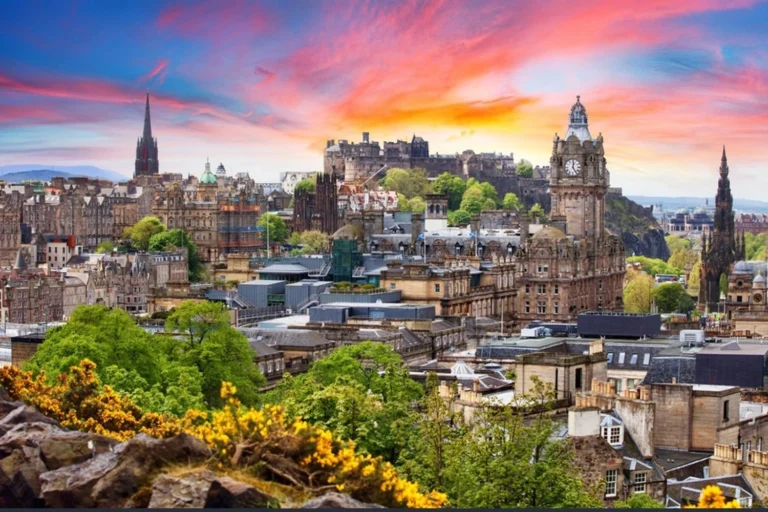Toronto: 30 Curious Facts Behind the City’s Cool
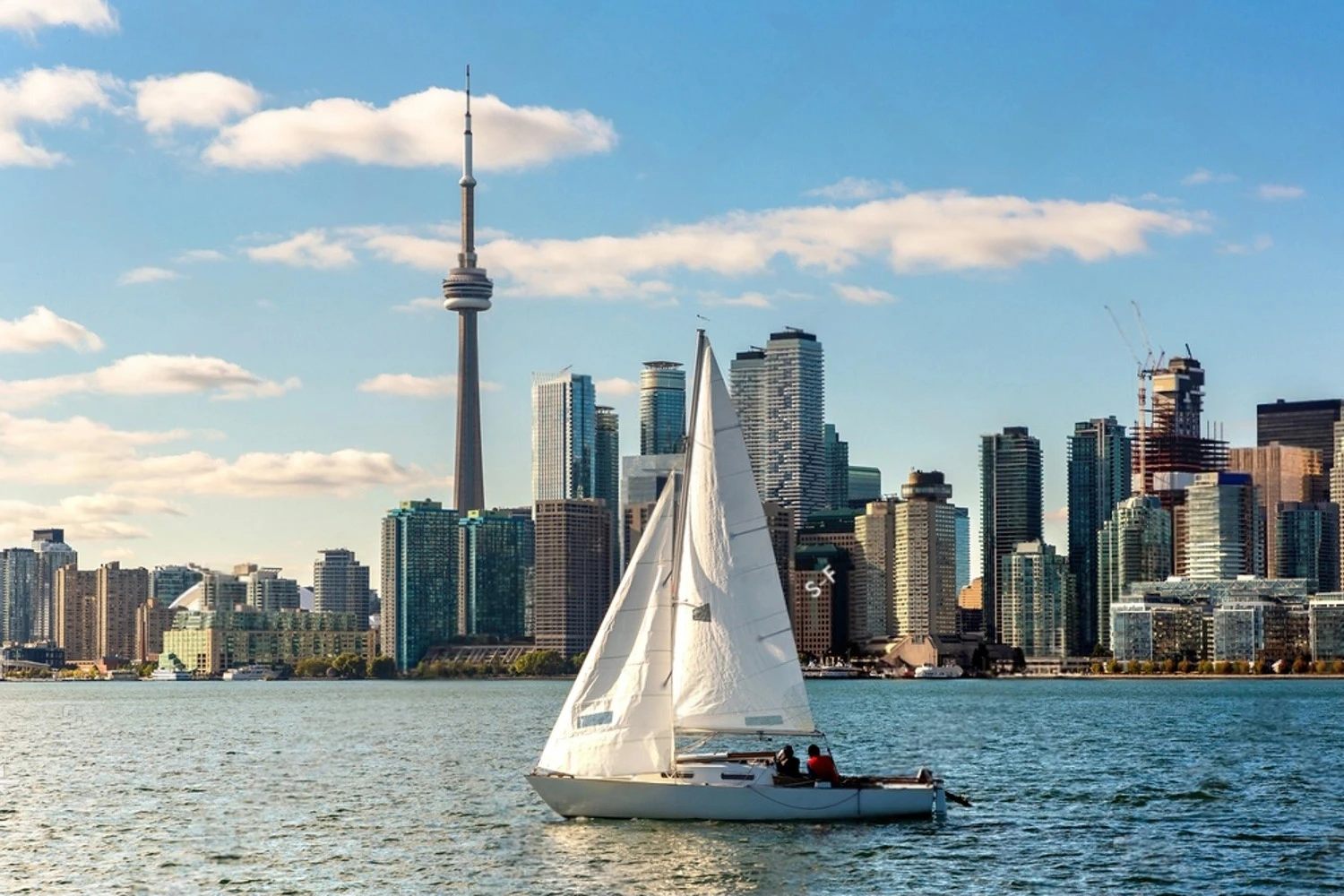
Toronto feels like a song made of footsteps and skylight. The air carries the scent of coffee and rain, and every street seems to hum in a different language. Beneath the skyline’s glass calm, there’s a quiet kindness – small moments of connection that make the city feel softer than it looks. Stay long enough, and you’ll sense it too: Toronto’s beauty isn’t loud, it’s the kind that lingers like an afterthought you can’t quite forget.
The city that almost answered to Georgina
Funny how a name can tilt a place’s mood. I try to imagine stepping off a streetcar into Georgina, the lake wind in my sleeves, and it just feels like the wrong coat on the right day. In 1793, as the British took charge, John Simcoe wanted that name for the new settlement, a nod to King George, but his wife leaned toward something that sounded Indigenous, something truer to the ground beneath their boots.
So Toronto – from Mohawk for “meeting place” – held on, and you can feel why it fits. At a bus stop, strangers compare the weather in three accents; a bakery door opens to warm spice; summer festivals stretch across neighborhoods until you can’t tell where one ends. I remember thinking the name doesn’t just label the map; it suits the way people gather here, easy and open.
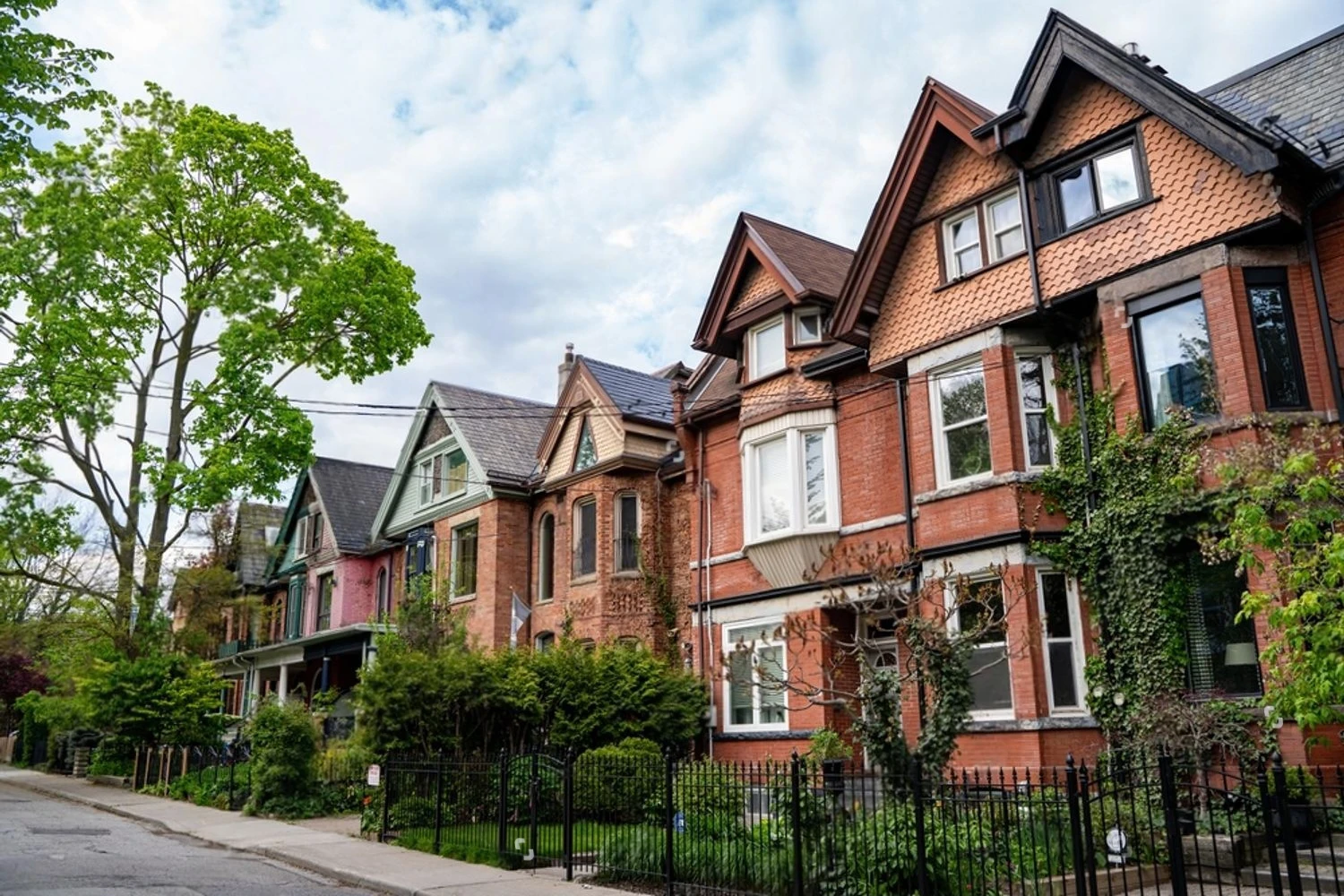
A second city hidden beneath winter streets
I didn’t think a city could carry a whole other world under its feet. But the PATH is exactly that-30 kilometers of tunnels and shops quietly humming while the sidewalks turn to glass. The air down there is warm and a little bakery sweet, with the soft chorus of heaters, espresso machines, and rubber soles whisking past. Locals laugh that they can go weeks without stepping outdoors when the blizzards come, and in Toronto it sounds less like boasting and more like a small, practical mercy.
What surprised me most wasn’t the size, but the feeling how the underground softens winter’s edges and turns survival into a kind of community. You drift past shoe repair counters, soup steam, bright window displays, and the occasional busker, following the overhead signs like the roots of a tree. It’s oddly tender, this life below the frost: proof that a city can tuck its people close, offering warmth and light when the sky forgets how.
When King Street first flickered into "artificial daylight"
Imagine the hush before a switch flips, that breath held second when strangers lean in together. In 1884, people packed along King Street and watched the night turn a cool, blue white. They called it "artificial daylight," and I love how plain that sounds – not poetry, just awe. I can almost hear the faint sizzle, feel the crisp bite of evening air, see brick facades gone pale while hats tilt back and faces open to the light.
Toronto likes a debut, and that night set the tone. It felt like more than a street lighting up; it was a mood, a promise – like a second sunrise borrowed from wires. Ever since, the place has had a way of pulling a bright thread through the dark, not to show off so much as to invite you in and say, look, there’s room in the future for all of us. I remember lingering on King after rain, the pavement shining, and thinking how wonder still arrives the same way: sudden, shared, and bright enough to make you feel seen.
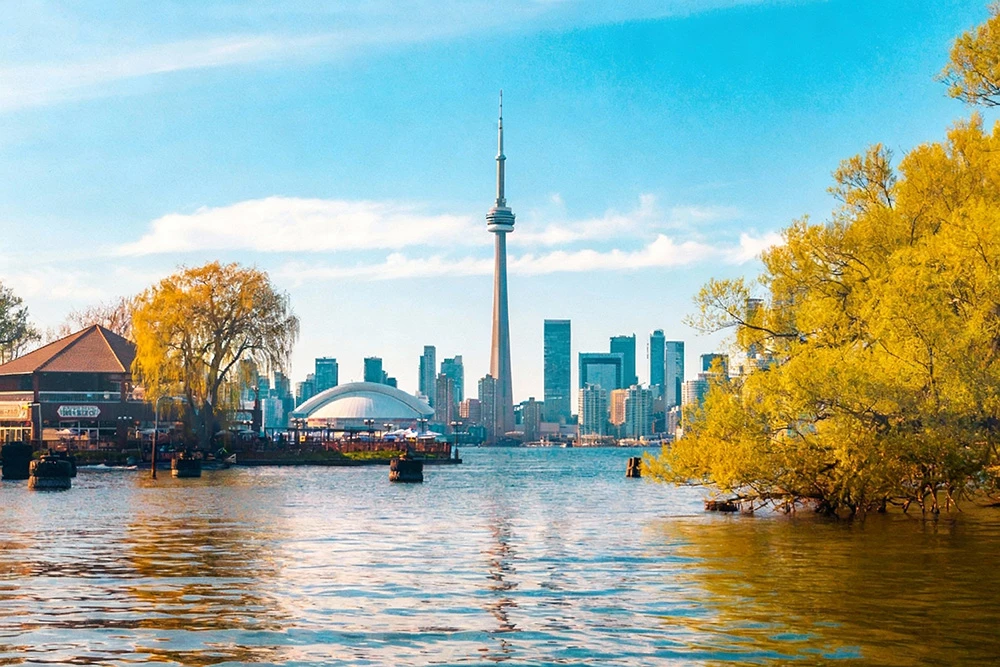
The street that outgrew its own legend
I used to love the swagger of calling it the longest street in the world, the way a city brags after midnight. Then I learned the truth: someone once stitched Yonge Street on paper to Highway 11, the wayward line that wanders almost to Minnesota, and the myth stuck like a catchy chorus. It’s funny how a place can wear a tall tale for years and still feel honest when the costume comes off.
Because even without the crown, those 86 kilometers feel huge starting with the thrum of shopfronts and streetcar bells and tapering into the hush where the streetlights thin and the sky gets bigger. Once, drifting north, I noticed how the air shifts from bakery warmth to cut grass and cold lake breath, like the city loosening its tie. Yonge is still a vein running through Toronto, carrying stories from downtown chatter to fields that seem to listen more than they speak and there’s something beautiful about a road that doesn’t need exaggeration to feel endless.
Where whisky once thundered through red brick veins
It’s funny how quiet these cobblestones feel now; in Toronto’s Distillery District, those red bricks once housed the loudest whisky heartbeat on earth. In the 1860s, Gooderham & Worts was turning out more than two million gallons a year – a tide of amber strong enough to float a ship and test a nation’s good sense.
I remember a late afternoon when the air held a faint malt sweetness, and the bricks felt warm even in the cold. The scale still startles me, not just as a number, but as a reminder of appetite and ambition – how much laughter, argument, and winter courage that much whisky could fuel.
Now the same walls carry art, café chatter, and the clink of glasses in a softer key. That’s what stays with me: a place that has traded industry for intimacy and kept its sense of self.
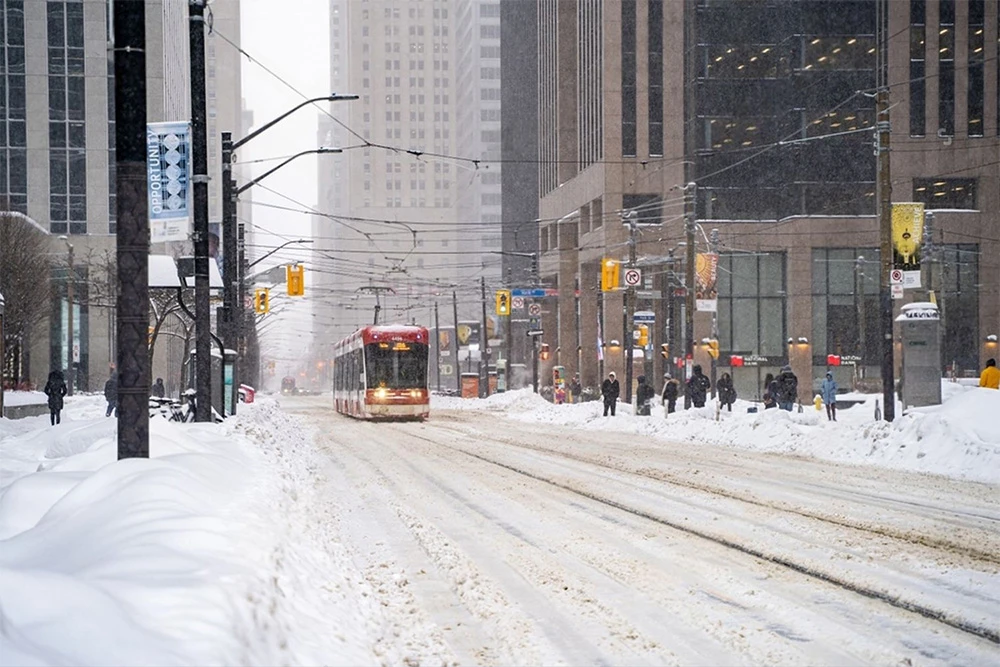
The night when pianos lined the street
I can’t get over the image: downtown gone quiet and raw overnight, the air tasting of ash while firefighters set charges that cracked the dark like thunder. And in the middle of it, people easing pianos out to the curb, keys catching the orange flicker, wood smelling faintly of varnish and smoke. It’s so human it almost aches saving something heavy and beautiful because it carries the room’s memories.
The whole scene feels both fierce and tender: dynamite to stop the flames, and yet gentle hands guarding melodies. I love that contradiction, how it says a place can be practical when it must and romantic when it matters, pianos like small lifeboats of sound bobbing on a street of hose water.
I remember standing there years later and thinking how a city reveals itself in what it refuses to lose. Maybe that’s the heart of Toronto steady in a crisis, a little dramatic at the edges, and determined to keep some music dry for the morning.
A giant that sways, but never loses poise
The wind up there has a sound you don’t forget. For thirty two years, the CN Tower was the tallest freestanding structure on Earth, and it still carries itself with a calm that settles your shoulders. I remember looking up at dusk as lights came on one by one, and feeling that quiet kind of trust – the sense that something bigger than you knows exactly what it’s doing.
Engineers tuned it so precisely that even when the gusts press and hum, the top only drifts a few centimeters – a steel spine that learned to dance. And in summer storms, its lightning rod takes around 80 hits a year. Somehow that makes the city feel braver, like weather can throw its loudest at us and we’ll still gather below, breathing easy while the tallest needle stitches the sky back together.
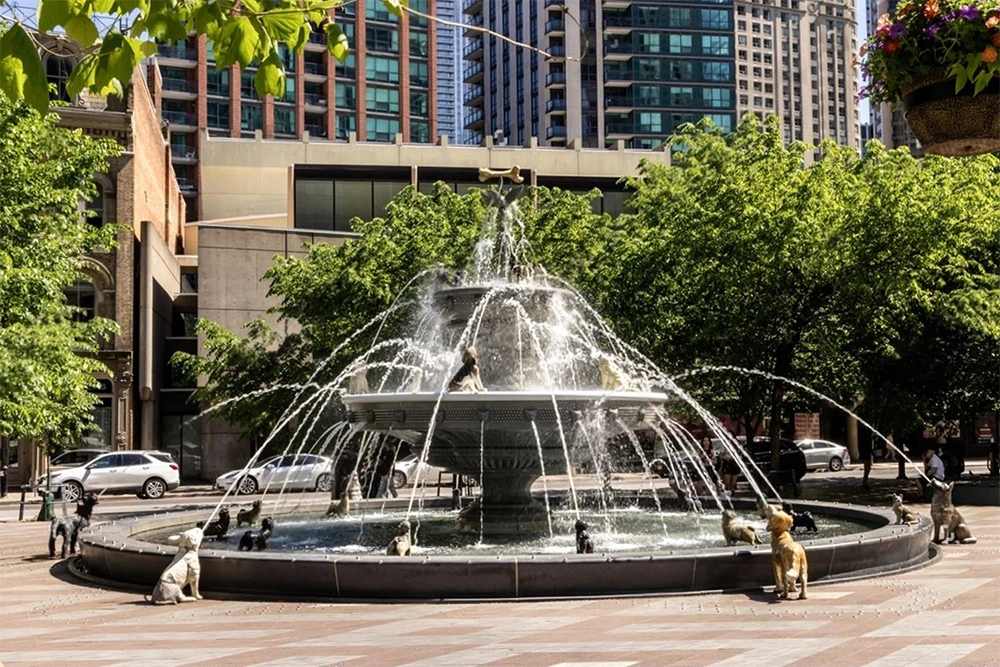
Cinematic cathedrals under the everyday city streets
I remember the hush first the way the air turned cool and mineral, and every sound came back with a patient echo. Down below, the tunnels rose in brick arches like a cathedral built for rain, and tiny drips kept time somewhere out of sight. It felt strangely tender to stand in that dimness, watching our light flicker across wet stone.
It is cinematic, no question the kind of place where you half expect Batman to have a weekend address. When a streetcar groaned overhead, the ceiling trembled just a little, and I could almost feel the city stacking up: chatter and neon above, this low, steady breath below, separated by a thin skin of pavement.
What surprised me most about Toronto’s sewers was the care in them. You can sense the hands that shaped those curves, the quiet planning that lets storms pass so life up top stays ordinary. You leave with your ears tuned to the city’s hidden heartbeat and a softer respect for the beauty we rarely see.
Skyscrapers balancing on old bog and buried boats
I still smile at how steady a skyline can look when you know the ground remembers otherwise. Once, while lingering by the waterfront with the smell of lakewater in the air, a friend told me how settlers spent decades draining marshland here, fighting mud and reeds just to make a footprint. It made the gulls sound older, somehow, like they’d watched the shoreline get stitched into shape. Toronto wears a dry coat over a wet heart, and you can feel that softness if you listen for it.
What gets me is how the past keeps tapping from below: crews sink a shovel for a new tower and wake a wooden hull, a river browned ship sleeping under the sidewalks. The soil still shifts a little, like it’s remembering what it was, and yet the city keeps rising, light bouncing off glass that stands where cattails once swayed. There’s a tender kind of courage in that building a future on uncertain ground, honoring the surprise of what the earth returns to your hands.
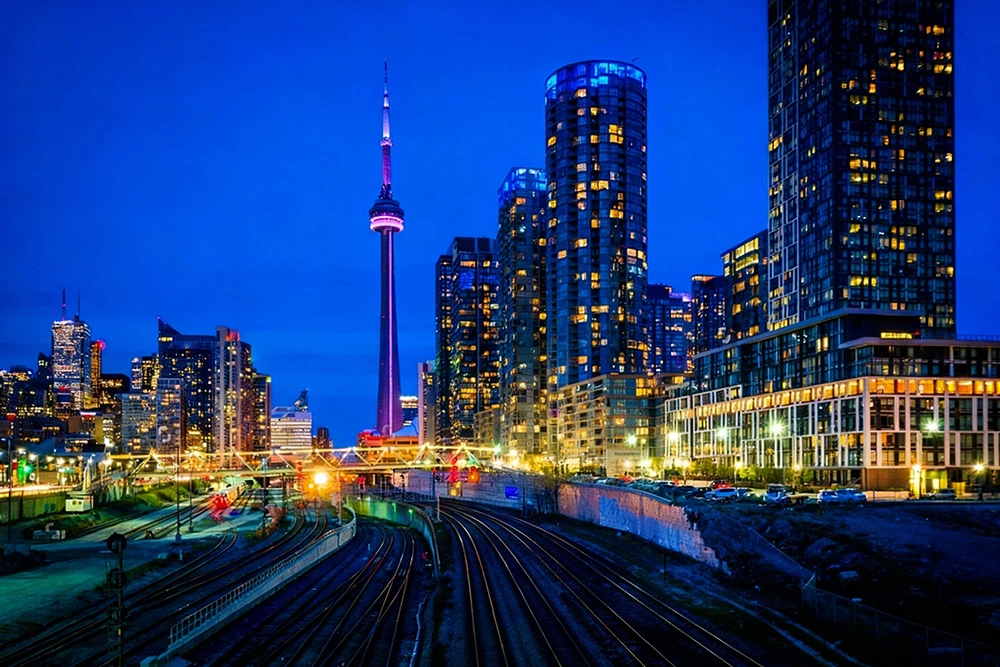
Buried rivers still murmur beneath Toronto's streets
On heavy summer afternoons, the sidewalks feel damp at the edges, and the air smells like wet leaves. I’ve stood over a cast iron circle and heard it a low, patient hiss rising through the manhole. Garrison, Taddle, Don: the old rivers that once twisted openly now slip beneath the blocks, still moving, still themselves.
I remember learning that planners in the 19th century tucked those waterways underground, trying to tidy the map, and feeling a quiet awe that the city didn’t erase them it simply built around their stubborn flow. On humid days their murmur returns, a hidden heartbeat under tires and footsteps, reminding me how Toronto keeps its history close, present in the everyday sounds you can almost hear if you pause.
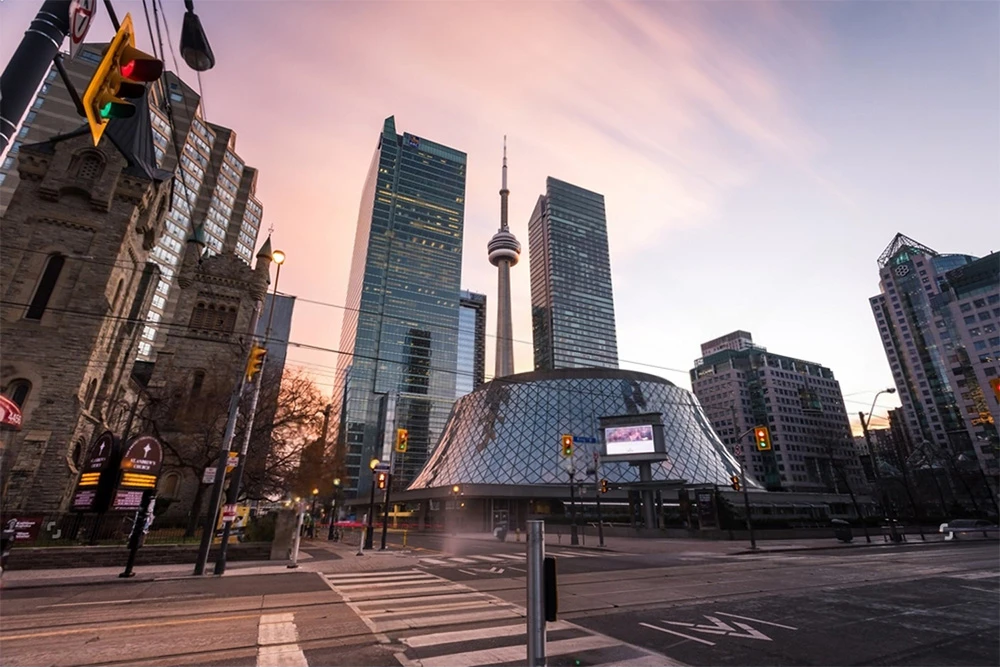
A hidden bridge beneath your daily crossing
I love how cities keep secrets the kind that hum along with you at rush hour. Somewhere near Old Mill, an intact bridge lies folded beneath another, a few quiet meters below the rumble of tires and the fuss of morning. I imagine the air down there cool and still, smelling faintly of damp stone, while up above the day clatters on as if nothing unusual is happening at all.
Engineers stumbled on it during viaduct repairs, and the thought makes me tender: a relic paused between eras, waiting, like a pressed leaf in the city’s old book. It changes the way I feel when I cross that stretch suddenly the commute isn’t just routine, it’s layered with other lives, other plans. There’s comfort in knowing the past isn’t gone; it’s simply resting under our footsteps, an echo tucked beneath the city’s steady heartbeat.
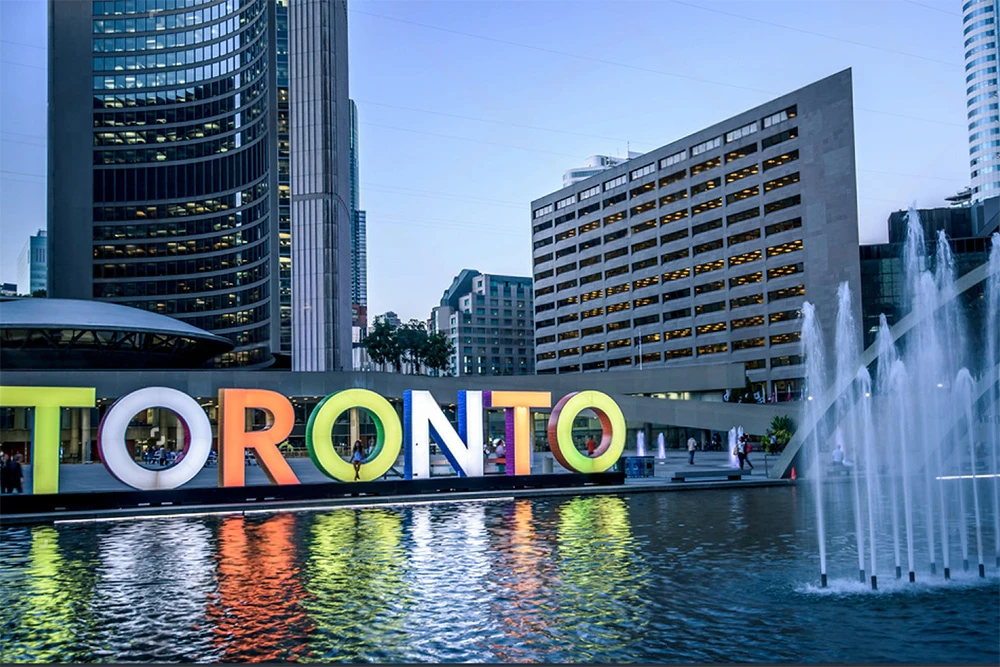
Toronto’s stubborn streetcars, a love and curse urban miracle
That bell the soft ding before the doors sigh open always feels like a friend clearing their throat. On good days they glide; on bad days they stall and make us late, and still the car glows warm against lake wind, windows fogging with wet scarves and coffee breath. People roll their eyes, then smile when someone scoots over; we all know the rhythm, the squeal at a curve, the hush when night turns the glass into mirrors.
In Toronto, they nearly tore the rails out in the ’70s, convinced the future ran on rubber. Neighbors, students, and dreamers taped posters to poles, packed meetings, and said not this these steel veins are part of us. They won, somehow, and transit planners flew in to study what they started calling the “Toronto Miracle,” as if a city had simply refused to forget itself.
I think that’s why the streetcars stick with you: they’re imperfect and human, and they keep strangers close enough to hear each other’s sighs and laughter. Once, rolling past a row of bakeries at dusk, I remember the warm yeasty air slipping in at the doors, and it felt like the city was letting us in on a secret. Next time the bell dings and someone mutters under their breath, I’ll remember that ordinary stubbornness saved these red carriages, and feel a small gratitude ride along.
A fairy tale castle built on bankrupt dreams
I remember the hush of stone and the faint scent of old polish, that strange stillness grand buildings carry. At Casa Loma, the dream ran so far ahead of reality the owner went broke before the castle could be finished, and you feel that like a beautiful breath held a second too long.
There were once fifty nine telephones here, busy enough to need their own operator, buzzing faster than the city’s switchboard could keep pace. I like to imagine the rooms softly alive with phantom rings, as if the house itself couldn’t sit still, all those voices trying to braid a future together.
Now, at dusk, bats scribble their little shadows across the rafters, and the air holds the gentle ache of those bankrupt dreams. It’s oddly tender, really the reminder that ambition can outrun solvency, yet leave behind something luminous. I walked away thinking how hopeful it is that even our unfinished stories can still make people look up and wonder.
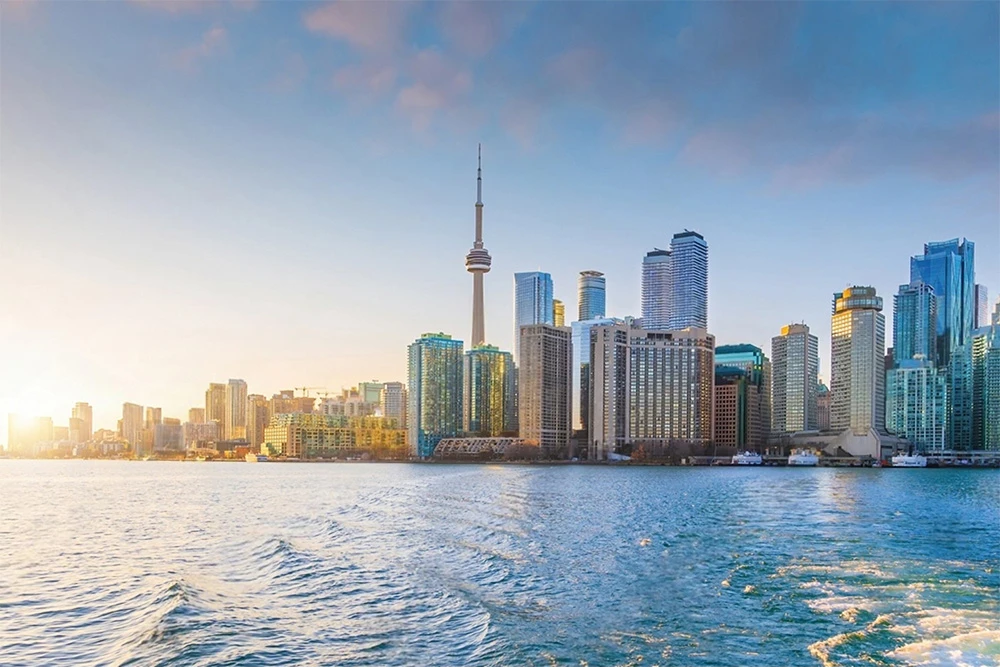
The world tucked into a few city blocks
I remember an evening when the air smelled like garlic and cardamom at the same time, and I laughed because my appetite couldn’t choose. Within a few blocks you catch the smoke of Greek souvlaki, the warm spice of Somali sambusas by a bakery window, and then the unabashed joy of Korean karaoke spiraling out of a neon doorway. It’s dizzying in the best way comforting and bright.
More than half the people here were born outside Canada, and that stops being a statistic when you hear the sidewalk chatter accents braided together like warm scarves. That’s the quiet magic of Toronto: a city that feels like a table set for a thousand homes, where a simple walk turns into a gentle reminder that belonging can be plural. I remember thinking how easy it is to be many things at once here, and how good it feels when the night hums with every kind of welcome.

Where a city laughs at its strangest truths
I didn’t expect a city to laugh at itself so tenderly. At the annual Festival of Bizarre Toronto History, people leaned in with that hush that comes just before a good secret; someone read about circus riots, and the room buzzed. The air tasted a little of cold and coffee, the kind you hold between your hands on a blustery evening, and every so often the crowd let out a gasp that turned into laughter.
They told stories I’d never heard in school: children organizing strikes at a candy factory, a mayor rumored to own a brothel, a city wobbling on the tightrope between prim and unruly. It felt like opening a family album and finding the scribbled, honest snapshots no one meant to pose for. The details weren’t polished; they were sticky with sugar and street grit, and somehow that made them kinder.
Maybe that’s the real charm: owning the odd chapters so no one else can weaponize them. I remember stepping out afterward with a grin I couldn’t shake, the streetcar’s bell chiming in the distance and a sweetness lingering in the night from some unseen bakery. It made the city feel braver, more human flawed, funny, and unafraid to tell the truth.

From cavalry drills to a bohemian chorus
Some afternoons the air hums with tangled comfort steam from a bakery drifting into guitar fuzz, a splash of lemon cutting through the smell of coffee. It still startles me to think the park where kids sprawl was once a training ground, a British Loyalist war hero drilling horses in tight circles while the soil shook. I remember learning that and glancing down at the grass, half expecting to find a horseshoe wedged between clover and bottle cap.
Kensington Market in Toronto has kept every voice that passed through: Jewish bakers leaving the warmth of rye in the morning, Portuguese fishmongers bringing brine and bright scales at noon, punk rockers plastering corners with noise and stubborn color. You can read it in the mismatched architecture tin awnings, wobbly porches, hand lettered signs, sudden bursts of paint stitched together like a patchwork jacket that chose every piece for a reason. The surprise is how kind that jumble feels: a place where history doesn’t smooth its edges, it lets them show, and somehow that honesty makes room for everyone.
Footsteps on an empty old gallows floor
Some buildings hold their breath after dark. In Toronto’s old Don Jail, the air feels tight and cold; dust hangs in the light and sound carries strangely. It was once the model of its time, but executions arrived quietly, arranged out of sight, and the story changed. Guards still tell of footsteps sliding across the gallows room when no one is there.
I remember pausing by the stairwell and feeling the temperature dip a touch, as if a door had been left ajar to another century. It didn’t feel like a scare so much as a reckoning, a reminder that progress hasn’t always been kind here. Maybe those steps are just old boards flexing, or maybe they’re a soft insistence that we keep listening to what was done in the dark.
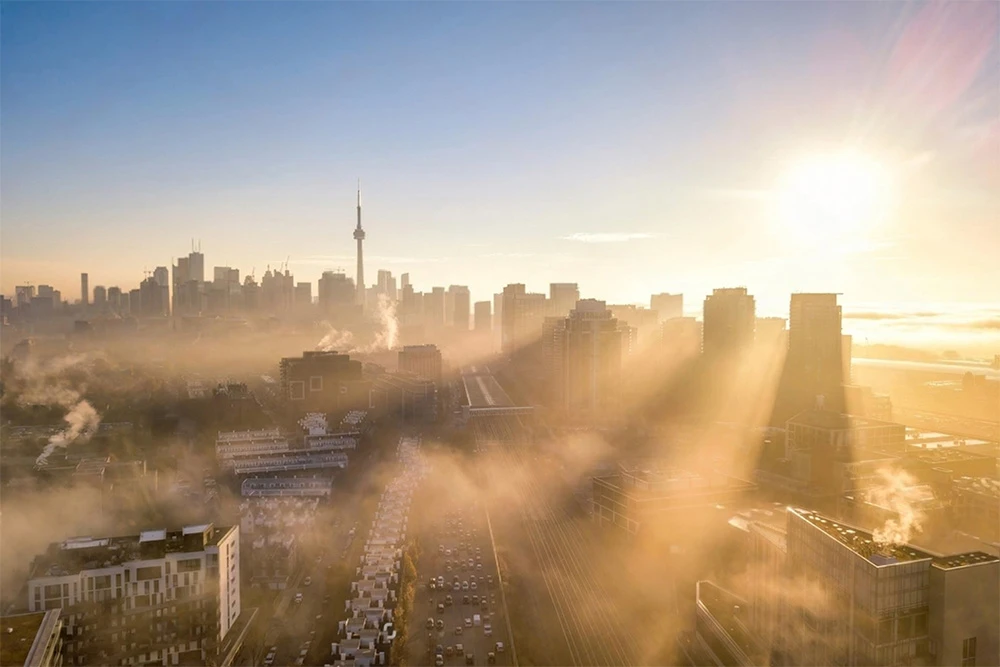
Fifteen thousand stories, laced and shelved in Canada
I didn’t expect to feel moved by shoes, but the hush of glass cases and the soft, clean scent of leather surprised me. In Toronto, the Bata Shoe Museum holds over 15,000 pairs, a whole library of footsteps: Napoleon’s boot stern and scuffed, a Barbie heel winking with plastic bravado, and snowshoes older than the Roman Empire that seem to carry the hush of winter in their woven ribs. I remember leaning in and feeling the odd tenderness of it all how something that simply touches the ground can hold whole lives, like time stitched into leather.
What I love is how unabashed it is: a true Canadian original oddly elegant and cheerfully niche. The mix feels like this city’s heartbeat: power set beside playfulness, survival set beside style, all treated with the same quiet respect. Walking out, I kept thinking how shoes remember what we forget every stumble, every dance, every necessary crossing and how beautiful it is that a place exists to honor that ordinary magic without apology.
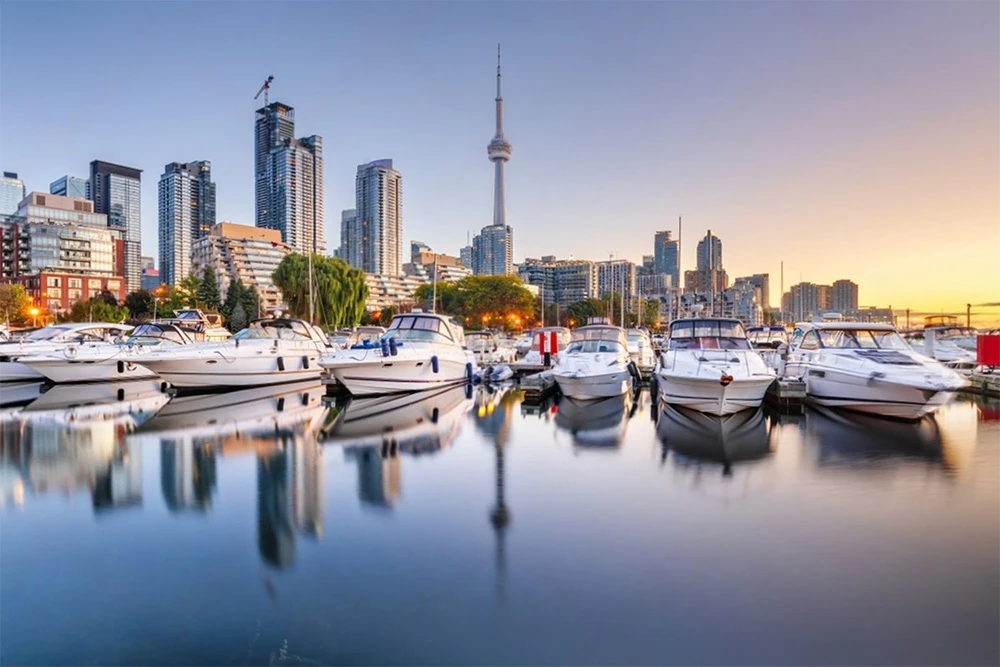
Tiny parkettes over retired gas station lots
You don’t expect softness between the tall panes of glass, and then a pocket of green nudges the sidewalk like a quiet yes. These little parkettes sit in leftover corners, many right where gas stations once stood. The air carries cut grass sweetness and a hint of coffee from a passing cup; a sparrow chatters somewhere low, and the city noise slips down a notch.
City planners call them “breathing rooms for concrete souls,” and the phrase makes me smile because it feels true. In Toronto they feel like the city’s practical kindness tiny spaces made from old pavement that offer calm. I remember pausing on a sun warmed bench beside a young maple and thinking the block had grown freckles on a steel face. It’s the smallest kind of hope, the sort that makes a hard day feel a little more human.
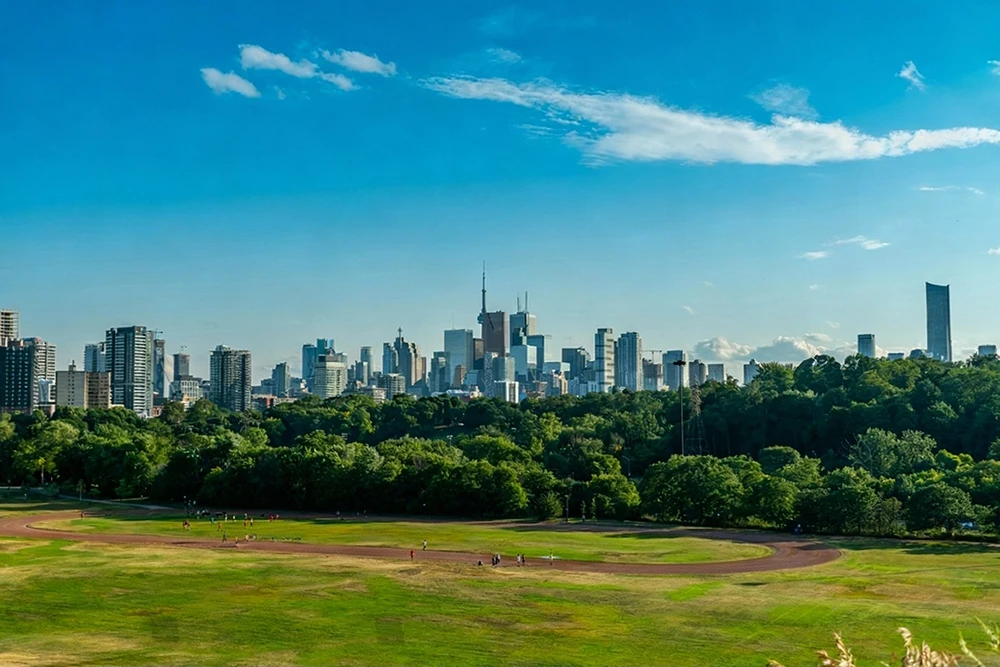
A vanished Chinatown, rebuilt west, steamier and stronger
It still stings to think how quickly a neighborhood can be erased. In the 1950s, when City Hall sprawled outward, the old Chinatown was torn away families displaced, hand painted characters peeled from windows, festival drums falling quiet, like a rug yanked out from under a crowded table. The word progress didn’t mean much against that kind of silence.
But people carried their kitchens and stories west and, piece by piece, stitched a new neighborhood together like a bright quilt. Now the avenue hums steam fogging windows, neon buzzing low, the clean bite of scallion and ginger, and dumplings that are plump with care. I remember realizing the hurt can fade without disappearing, and that resilience isn’t loud so much as steady. Toronto remembers in the most honest way it can: by feeding you until the ache eases.
https://en.wikipedia.org/wiki/Toronto
Two Edwardian theatres stacked like parallel worlds
I didn’t expect a staircase to split time in two. At Toronto’s Elgin and Winter Garden Theatre the world’s only surviving double decker the air shifts between floors: below, red velvet glows and gold leaf holds a soft hush; above, a leafy ceiling and lantern light turn the room into a garden, like stepping into spring after a long winter. Even the quiet changes character, one side warm and theatrical, the other bright and breathing.
I remember lingering on the landing, almost superstitious about choosing a side. It’s surprising and strangely tender that two perfectly preserved Edwardian playhouses can live back to back, proving a building can keep more than one mood safe. It made me think how a night out can carry both grandeur and playfulness, and how sometimes all it takes to shift the heart is a handful of steps.

Whisky under fish crates, fortunes rising above the waterline
Sometimes the lake air smells like diesel, wet wood, and a story that almost got away. I picture ferries nudging out from Toronto’s lakefront, fish crates stacked high, and somewhere under the scales and ice, bottles bound south during Prohibition. There’s something deliciously sly about it the gulls crying overhead, the water steady and unbothered, while a small rebellion rode beneath the stink of the catch, headed for a thirsty border.
What gets me is how quietly the city pocketed that chapter, then smoothed its collar and built luxury condos where smugglers once slipped past customs. I remember watching the sunlight slide over the glass and feeling a little grin: the lake was a quiet accomplice, and now the towers gleam like polished trophies. It’s that mix I love here the mischief and the polish, the sense that a place can keep its secrets and still grow into the shine.
When ice palaces lit up winter nights
I love the idea that cold can make a place more theatrical. There was a winter when massive fortresses rose from blocks hauled out of the lake, glittering like a lantern made of winter. In 1885, fireworks crackled overhead and spilled color down the icy turrets, the light catching and holding as if the walls had trapped a rainbow. You can almost hear the soft squeak of snow under boots, feel your breath turning to tiny stars in the air.
I remember stumbling on an old line about people bringing flasks to “fight frost artistically,” and it made me grin; there’s a wry bravado in that, a warmth you can’t pour from a bottle. That playful grit feels so Toronto practical enough to outlast the season, cheeky enough to turn it into a spectacle. On nights when the air nips at your teeth, it’s easy to picture those palaces rising again by the shore, reminding you that winter can be a celebration, not just something to survive.

Fog Turns the Skyline Into a Whispered Ghost Story
I remember a night when the fog pulled a thin veil over the lake. The towers stopped being sharp and started to glow, their lights smudged and soft, like a quiet pulse behind frosted glass. The air smelled of wet stone and cold metal, and even the gulls seemed to hush, as if they were listening for something older than the city itself.
In Toronto, they say the old lighthouse keepers’ bell at Gibraltar Point can still carry on nights like that thin, patient, almost shy echoing the 1815 mystery of a vanished keeper and rum smugglers who may have silenced him. Hearing it made me feel how close the past really sits, not gone at all but within reach of the wind. It’s a port at heart, built on risk and night water, and some evenings the city lets that truth rise to the surface, ringing softly across the fog.
Whispers of a sealed lab below campus
It’s funny how a rumor feels truest at midnight. In Toronto, students swear there’s a tunnel under the old university that runs to a 19th‑century lab, locked forever after a fatal experiment. Administrators shake their heads and issue calm denials; somehow that soft refusal only sets the story harder, like plaster drying. You hear the legend in the low murmur outside libraries, in the curl of steam from the grates, in the gentle tick of radiators when the corridors go quiet.
I remember passing those stone buildings at dusk, the air tasting of cold metal and wet leaves, and thinking how every place needs a corner that refuses to be explained. Maybe that’s what the sealed lab story really gives the campus: a shared edge of wonder, something that keeps the night bright with maybe. It’s not about proving a tunnel at all it’s about the way a place can carry both truth and myth without tearing, and how the not‑knowing makes everyone lean in a little closer.
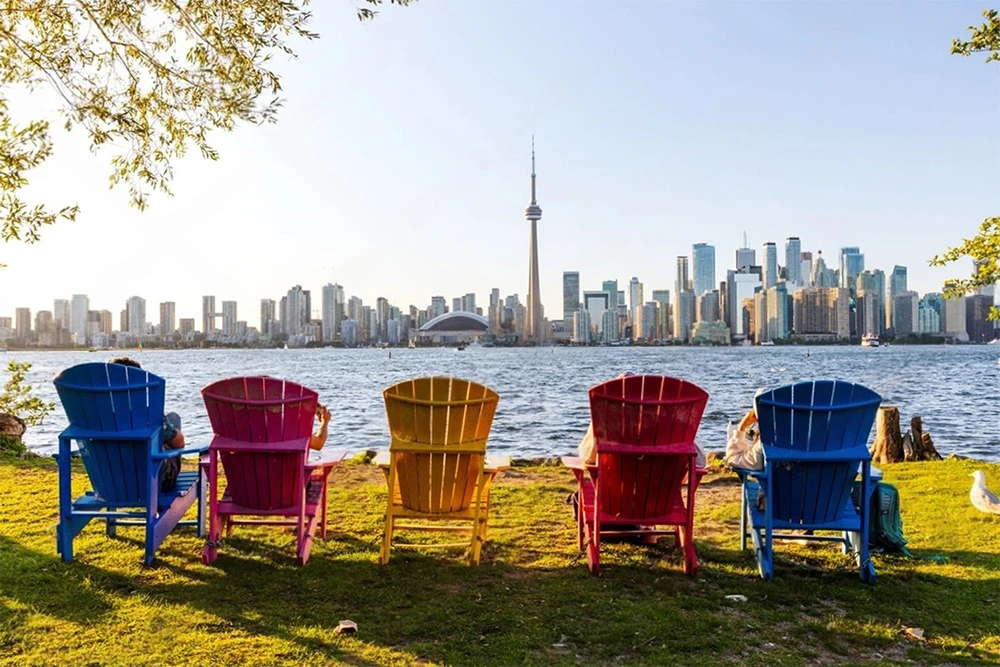
Where raccoons outsmart the bins, and us
Some nights you hear it first: the soft clink of a latch, a rustle like laughter, and then the glint of little masked faces in the streetlight. They move with the calm of locksmiths, tiny hands working the problem while the lane smells faintly of rain and last night’s takeout. The city turns into a puzzle box, and they seem born knowing which corners to press.
Somewhere, someone made an official looking “Raccoon Capital of the World” trophy, and it keeps getting informally handed to Toronto with a grin. Honestly, they’ve earned it. Engineers keep revising the city bins with new latches and hopeful angles, and the raccoons keep cracking the code, one quiet midnight at a time. For now, the scoreboard leans furry and smug.
I remember a neighbor once applauding in disbelief as a particularly round bandit lifted a lid like a stage curtain, and we all just laughed at them, at ourselves, at the whole silly brilliance of urban life. There’s a kind of humility in sharing the night with creatures this clever, a reminder that a city is a living conversation, not a fortress. The trophy might be a joke, but the pride behind it feels real: a place defined not only by people, but by the wits of its wild, uninvited geniuses.

South of Milan, hiding under a maple leaf
I still laugh at how wrong my mental map was. This skyline that everyone calls northern hides a small scandal: Toronto sits farther south than Milan. By mid summer, the air goes velvety and warm, the sidewalks shimmer, and the lake sends a cool sigh through streets where basil and tomatoes perfume the evenings. It feels like a postcard slipped into a parka pocket unexpected, sunlit, and perfectly at home.
Once, while wandering past patios strung with little lights, a friend said, “No wonder the nights feel longer here.” The season leans toward Italy more than most Canadians care to admit: slower dinners, gelato lines curling along the curb, laughter that doesn’t hurry. The city stretches like a cat in a window, taking its time with the heat, and suddenly “north” feels like a story we tell, not the whole truth.
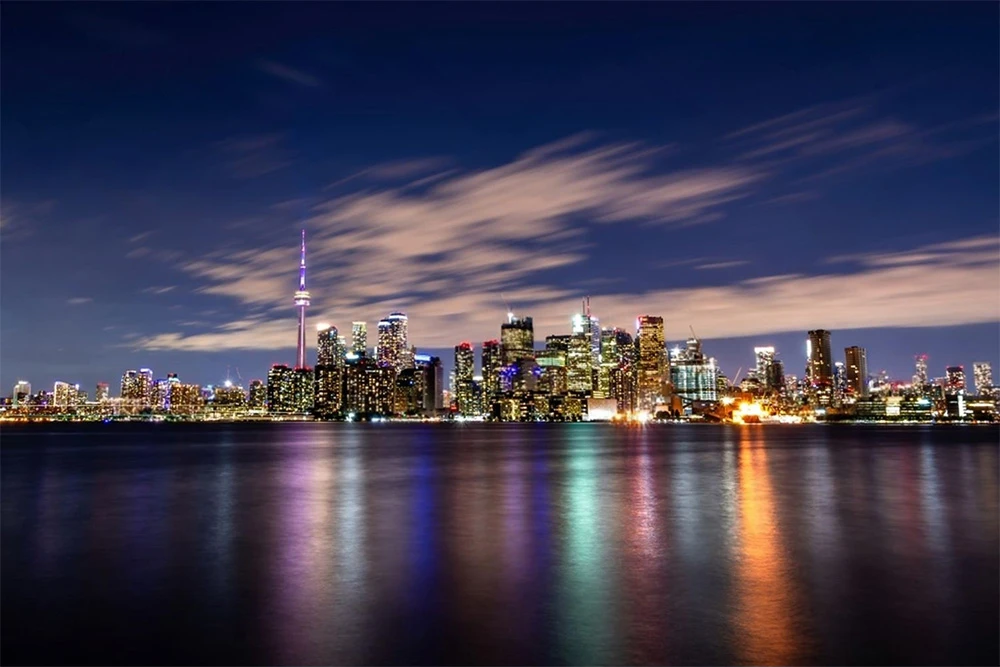
Coffee, apologies, and a hush of hidden steam
I used to joke that this place runs on coffee and apologies, and then winter taught me there’s another engine. Beneath the sidewalks an extensive steam network quietly feeds more than a hundred downtown buildings. You feel it in the faint warmth that slips through grates on cruel mornings, a shy exhale you only notice when you stop rushing. Once, waiting for a streetcar, I stood over the metal lattice and felt my shins thaw such a small, secret kindness.
Toronto is famously polite, but its bones are practical. The heat runs in unseen veins, carrying comfort into theaters, offices, old hotels, the parts of the city that keep the lights gentle and the doors open. I love that the warmth is shared, not hoarded an underground promise to take care of one another when the air turns sharp. It makes the city feel not just organized, but tender in the most unshowy way.
The winter glass dome Toronto nearly built
I still smile at the audacity of it: in the 1970s, someone in Toronto seriously proposed snapping a snow globe lid over downtown a clear shelter to soften snow and sift the dirty air. On days when the wind stings and the streetcars hum through gritty light, I can almost feel the hush that dome promised, the kind of warmth that makes your shoulders drop.
Money ended the dream, of course; a city sized glass roof was simply too much. Still, every few decades the idea drifts back like a song you can’t quite forget, resurfacing in conversations as a familiar what if, a kind of city legend that never quite fades. There’s something tender in it, not just the engineering bravado but the neighborly wish to gather people in from the weather and let them breathe easier.
Maybe that’s what I love about this place: deeply practical, yet unashamed of big hearted dreams. We never got the dome, but we kept the impulse the belief that winter can be made kinder, that clear air and shared warmth are worth imagining first and building toward, piece by small piece.
Politeness with a wink, secrets under the sidewalks
At first it feels like a city ironed crisp, all sorrys and doorways held open, the softness of winter scarves even in July. Then the wink arrives. In church basements that smell of drip coffee and floor wax, drag queens glide past folding chairs, sequins sparking under humming lights, and everyone applauds, unfazed and delighted.
Even the raccoons have ambition here, nosing their way into Parliament to test the snack supply lids clatter, a security light flickers, somewhere a stifled laugh. Beneath the sidewalks, old stories hover: the trace of creeks, buried bricks, the shadow of markets and missing steps warming like a kettle about to sing.
I remember realizing that the politeness isn’t a disguise; it’s a kind of welcome for the odd and tender, a promise that eccentric things can happen without anyone making a fuss. That’s why Toronto lingers quiet, quirky, wonderfully alive so you leave smiling without noticing, and a hint of glitter still catching the light.

Final thought
In the end, it’s the small, unguarded moments that show Toronto’s true face – the kindness of a stranger on the subway, the glow of café windows on a rainy night, the quiet hum of languages weaving through the air. Beneath its skyline, the city feels like a heartbeat made of many rhythms, steady and alive. Toronto’s beauty isn’t loud; it’s patient, layered, and real. And when you leave, you carry a little of its calm energy with you – like a light that keeps flickering gently, somewhere just behind your heart.

